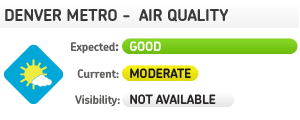Air Pollution Control Strategies
What is a Control Strategy?
An air quality control strategy, as defined by the U.S. Environmental Protection Agency, is “a set of specific techniques and measures identified and implemented to achieve reductions in air pollution to attain an air quality standard or goal.” Evaluation and implementation of control strategies is a key element of air quality planning.
As the lead air quality planning agency for the Denver Metro/North Front Range (DM/NFR) region, the RAQC is responsible for evaluating control strategies aimed at reducing emissions, particularly precursors to the formation of ozone – namely nitrogen oxides (NOX) and volatile organic compounds (VOC). It is the RAQC’s goal to implement strategies that will continue to decrease ozone levels and bring the area into compliance with federal ozone standards to protect public health, the environment, and reduce the impacts of climate change.
Strategies are identified are identified by stakeholders and are then evaluated by the RAQC’s Control Strategy committee based on the following criteria:
- • Air Quality Benefit
- • Estimated Costs
- • Impacted Groups
- • Environmental Justice
- • Feasibility of Implementation
- • Necessary Partnerships
- • Time to Implement
Engage in the RAQC Control Strategy Committee and Workgroups
The RAQC’s Control Strategy Committee continues to actively evaluate and pursue effective air pollution control strategies in the DM/NFR. CSC’s monthly meetings are open to public and are aimed at getting stakeholder input throughout the process of considering control strategies. The RAQC also stands up workgroups on discrete control strategy topics as relevant. More information on active and historic workgroups is available on the CSC page.
Please visit the RAQC Committee Page for more information or sign-up to receive emails about upcoming meetings and relevant information.
Control Strategies Currently Under Consideration
The RAQC assesses, implements, and improves control strategies through the Control Strategy Committee and specific Work Groups to further develop and advance bold strategies. Strategies are currently being evaluated in the following categories:
- Oil and Gas Sources
- Indirect Sources
More information about the broader list of control strategies that the RAQC is assessing is available in the RAQC’s annual workplan. The RAQC also runs several programs that implement and promote control strategies and maintains a toolbox of strategies for local governments.
Previously considered and enacted strategies are documented on the Control Strategies Archive page. Historic Work Group efforts are documented on the RAQC’s Committees page.
Submit an Idea
If you have an idea for an emission control strategy that you’d like the RAQC to investigate please fill out a suggestion form!


